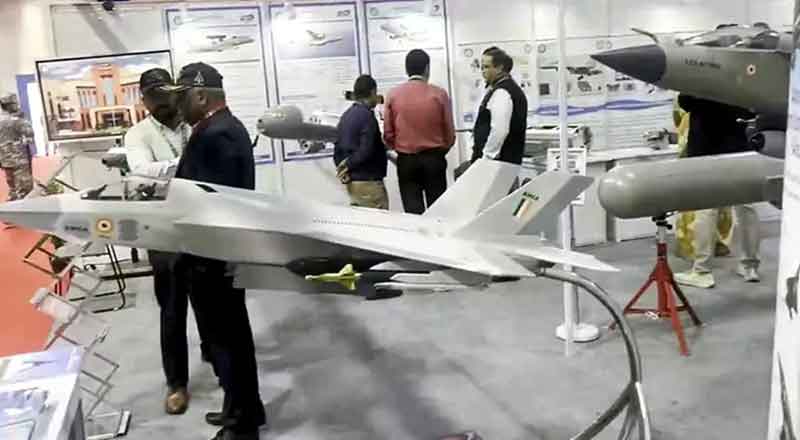The Defence Research and Development Organisation (DRDO) continues to push the boundaries of India’s defense capabilities with the recent handover of the production document for the 30mm High Explosive Preformed Fragmentation (HEPF) Shell to the Director General of Naval Armament Inspection (DGNAI). This significant event marks a pivotal moment in the Indian Navy’s ongoing efforts to bolster its defense systems against modern threats, particularly the growing menace posed by unmanned aerial vehicles (UAVs) or drones.
The handover ceremony, organized at the Armament Research and Development Establishment (ARDE) in Pune, saw the participation of top officials from DRDO and the Indian Navy. The document, which details the manufacturing process, specifications, and quality assurance protocols for the 30mm HEPF Shell, is a testament to India’s indigenously developed defense technology. This shell, which has been meticulously crafted by ARDE, will soon be an integral part of the Indian Navy’s arsenal, providing a significant boost to its combat capabilities.
The Significance of the 30mm HEPF Shell
The 30mm HEPF Shell is a cutting-edge piece of ammunition designed specifically to enhance the lethality and effectiveness of the Indian Navy’s existing AK-630 Naval Gun system. This system, already in service across various naval platforms, is known for its rapid rate of fire and precision, making it an ideal choice for close-in weapon systems (CIWS) that are crucial for defense against incoming threats, including missiles and aircraft.
What sets the 30mm HEPF Shell apart is its advanced fragmentation technology. Unlike traditional high-explosive incendiary (HE/I) shells, the HEPF shell is engineered to produce a more controlled and concentrated burst of fragments upon detonation. This results in greater fragmentation lethality, making it exceptionally effective against small, agile targets such as drone swarms. The ability to neutralize multiple UAVs in a single burst is a critical advantage in modern naval warfare, where drone technology is increasingly used for reconnaissance, targeting, and even direct attacks.
Development and Testing of the HEPF Shell
The development of the 30mm HEPF Shell is the result of years of research and collaboration between various entities within India’s defense sector. ARDE, a premier laboratory under DRDO, spearheaded the project, working closely with the Indian Navy to ensure that the shell met the rigorous standards required for naval combat operations.
One of the key aspects of the shell’s development was its compatibility with the AK-630 Naval Gun. This was achieved by designing the HEPF shell with similar dimensions and characteristics as the in-service HE/I shell, allowing it to be seamlessly integrated into existing weapon systems. However, the enhancements made to the shell’s fragmentation properties required extensive testing to ensure reliability and effectiveness.
The shell hardware was manufactured by three Indian firms, each selected for their expertise in precision engineering and defense manufacturing. These firms worked under the stringent specifications provided by ARDE, producing the shells which were then subjected to a series of rigorous gun firing proof tests. These tests, conducted in association with the Naval Armament Inspectorate in Jabalpur, confirmed the shell’s suitability for use in the AK-630 gun. The successful completion of these tests was a crucial step towards the shell’s induction into the Indian Navy’s inventory.
Strategic Implications for the Indian Navy
The induction of the 30mm HEPF Shell into the Indian Navy is not just a technological upgrade; it represents a significant strategic enhancement. In recent years, the threat landscape for naval forces around the world has evolved, with drones emerging as a versatile and potentially devastating weapon in asymmetric warfare. The ability to effectively counter drone swarms is now a critical requirement for any modern navy.
By equipping its ships with the 30mm HEPF Shell, the Indian Navy is significantly improving its defensive posture. The enhanced lethality of the HEPF shell means that naval platforms can now engage and neutralize aerial threats more effectively, reducing the risk posed by drones and other small, fast-moving targets. This is particularly important in the context of India’s maritime security environment, where the protection of strategic assets such as aircraft carriers, destroyers, and coastal installations is paramount.
Indigenous Development: A Boost to India’s Defense Industry
The successful development and production of the 30mm HEPF Shell are also a testament to India’s growing self-reliance in defense manufacturing. DRDO, through ARDE and its collaboration with private industry, has demonstrated that India possesses the technical expertise and industrial capacity to produce advanced weapon systems indigenously. This aligns with the broader goals of the ‘Make in India’ initiative, which aims to reduce dependence on foreign defense imports and boost domestic manufacturing.
The handover of the production document to DGNAI signals that the Indian defense industry is ready to meet the Navy’s requirements for this advanced ammunition. With the production process now fully documented and validated, Indian manufacturers can begin large-scale production of the HEPF shells, ensuring that the Navy’s needs are met in a timely and cost-effective manner.
The Road Ahead: Future Developments and Enhancements
While the handover of the production document is a significant milestone, it is also the beginning of a new phase in the development of naval ordnance. As the Indian Navy continues to modernize and expand its capabilities, there will be ongoing efforts to refine and enhance the 30mm HEPF Shell and other munitions.
Future developments may include further improvements in fragmentation technology, increased automation in the production process, and the integration of smart technologies that can enhance the precision and effectiveness of the shell. Additionally, there may be efforts to develop new variants of the HEPF shell, tailored to specific operational requirements or designed to counter emerging threats.
Conclusion: A Landmark Achievement for Indian Defense
The handover of the production document for the 30mm HEPF Shell to DGNAI is a landmark achievement for DRDO, ARDE, and the broader Indian defense industry. It represents the successful culmination of years of research, development, and collaboration, and marks a significant step forward in enhancing the combat capabilities of the Indian Navy.
As these shells enter production and are inducted into service, they will play a crucial role in safeguarding India’s maritime interests and ensuring that the Navy remains well-equipped to meet the challenges of modern naval warfare.





